
LEWIS MORLEY (B.1925)
Christine Keeler, 1963
Gelatin silver print, printed 1991
18 x 13 7/8in. (45.5 x 35.3cm.)
Christine Keeler, 1963
Gelatin silver print, printed 1991
18 x 13 7/8in. (45.5 x 35.3cm.)
Private collection
Christine Keeler, (born February 22, 1942, Uxbridge, Middlesex, England—died December 4, 2017, Orpington, Kent), English model who, as one of the central figures in the Profumo affair, contributed to the collapse of the Conservative government of Harold Macmillan.
At age 16 Keeler left home and moved to London to work as a fashion model. Over the next two years she took a number of different jobs, eventually becoming a dancer at a Soho gentlemen’s club that catered to the upper classes. There she met Charles Ward, a physician who was connected to some of the most politically and socially powerful families in England. Keeler moved in with Ward and he acted as her patron, introducing her to men who moved in his circle, including Eugene Ivanov, a Russian military attaché and intelligence agent with whom Keeler became romantically involved.
In July 1961 Keeler met John Profumo, the secretary of state for war, at one of Ward’s parties, and the two began a short-lived affair. Rumours of the relationship leaked to the press, but Profumo was quick to deny them, going so far as to lie before Parliament in March 1963. Evidence of the affair quickly accumulated, however, and Profumo resigned in June 1963. Largely due to the scandal, the Macmillan government was voted out of office within a year.
At the height of the media flurry surrounding the Profumo affair, Keeler posed for a series of publicity shots with photographer Lewis Morley. The most famous of those images, featuring a nude Keeler astride a wooden chair, became one of the most iconic photographs of the 1960s. Keeler subsequently retreated to private life, emerging in 2001 with the biography The Truth at Last: My Story. The events of the Profumo affair were dramatized in the film Scandal (1989). More on Christine Keeler
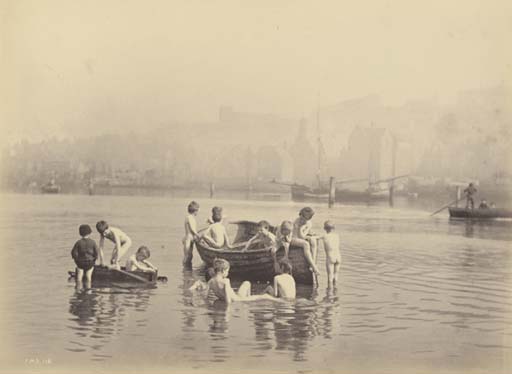
FRANK MEADOW SUTCLIFFE (1853-1941)
Scenes of Whitby, c. 1880s
Album of 54 albumen prints.
approx. 5 x 8in. (12.7 x 20.3cm.) or reverse. Burgundy leather.
Album size: 12 x 10in. (35.5 x 25cm.)
Scenes of Whitby, c. 1880s
Album of 54 albumen prints.
approx. 5 x 8in. (12.7 x 20.3cm.) or reverse. Burgundy leather.
Album size: 12 x 10in. (35.5 x 25cm.)
Private collection
Frank Meadow Sutcliffe's father was a painter, printmaker, and an amateur photographer. Frank began to photograph when the family moved to Whitby, Yorshire, in 1871. He first worked for Francis Frith; in 1875 he opened his own portrait studio. In his spare time he walked around Whitby, photographing people, scenes, and landscapes, attempting to develop an unmannered, natural style.
Between 1881 and 1905 Sutcliffe won sixty-two medals at international exhibitions. He had an arrangement with Kodak to try out the latest model cameras; Kodak had the option of using any picture he had taken with their apparatus for their own purposes. Sutcliffe wrote the "Photography Notes" column for the Yorshire Weekly Post from 1908 to 1930, and contributed articles to Amateur Photographer as well as other non-photographic magazines.
Late in his life Sutcliffe was asked by the council of the Whitby Literary and Philosophical Society to become the curator of the Whitby Gallery and Museum, a position he held until his death at the age of eighty-seven. More on Frank Meadow Sutcliffe
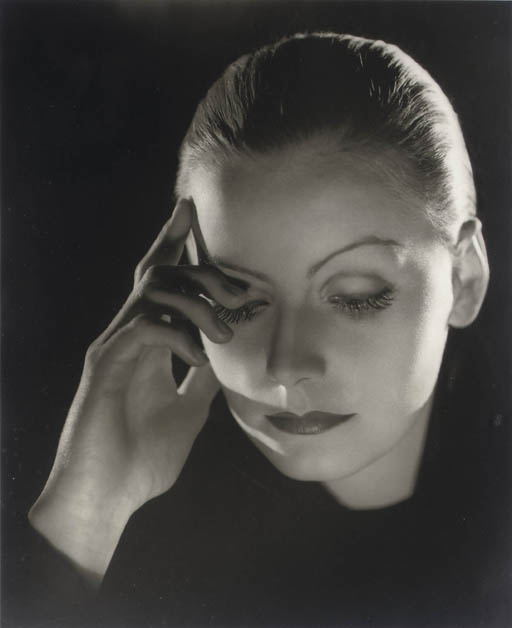
CECIL BEATON (1904-1980); CLARENCE SINCLAIR BULL (1895-1979)
Greta Garbo, 1930s-40s
Gelatin silver print
7½ x 7½in. (19 x 19cm.)
Greta Garbo, 1930s-40s
Gelatin silver print
7½ x 7½in. (19 x 19cm.)
Private collection
Greta Garbo starred in movies of both the silent and the talkies eras, one of the few artists who made the transition very successfully. She is remembered for her elusive persona and husky voice. She was not just beauty but matched it with her intelligence and love for independence. Despite the fact that most of her movies were MGM productions; she would not let the banner unduly exploit her popularity. In fact, she was perhaps the first actor to assert herself using her fame. At the same time, she would go any length to ensure that nothing affected her performance by being punctual at the sets and always well prepared for the role she was to essay. She could romance, play the vamp or shine in a comic role with ease. Her role as a prostitute in ‘Camille’ is considered by critics to be her best. It is said of her acting technique that her eyes did all the acting. She introduced the method of underplaying expressions which was innovative, unique and much ahead of the time. Starting from a small role in a Swedish movie till the time she retired her career was one of unmatched success. Despite her immense popularity, she could never win an Oscar for her performances. More on Greta Garbo
Clarence Sinclair Bull (May 22, 1896 – June 8, 1979) was a portrait photographer who worked for movie studios during the Golden Age of Hollywood. He was head of the Metro-Goldwyn-Mayer stills department for nearly forty years.
Clarence Sinclair Bull was born in Sun River, Montana, in 1896. His career began when Samuel Goldwyn hired him in 1920 to photograph publicity stills of the Metro-Goldwyn-Mayer film studio's stars. He is most famous for his photographs of Greta Garbo, taken between 1926 and 1941. Bull's first portrait of Garbo was a costume study for the silent romantic drama film Flesh and the Devil in September 1926.
Bull was able to study with the great Western painter, Charles Marion Russell. He also served as an assistant cameraman in 1918. Bull was skilled in the areas of lighting, retouching and printing.[4] He was most commonly credited as "C.S. Bull."
Bull died on June 8, 1979, in Los Angeles, California, aged 83. More on Clarence Sinclair Bull
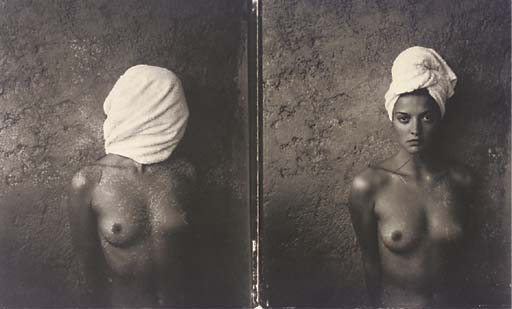
David Bailey
Catherine Bailey, St. Paul de Vence, 1983
Platinum print, printed 1990 10½ x 17in. (26.6 x 43.2cm.)
Private collection
David Bailey was born in 1938 in Leytonstone, East England, David Royston Bailey is one of the most respected photographers in the world. He worked as a fashion photographer for Vogue magazine, but he is also known for his work on the ‘Swinging London’ scene from the 1960s, which gave him celebrity photographer status.
David Bailey started his professional career as a photographic assistant at John French Studio. In 1960, he worked as a photographer for John Cole’s studio. Later that year, Bailey was contracted by British Vogue magazine as a fashion photographer. He also took on a great deal of freelance work at that time
Along with Brian Duffy and Terence Donovan, Bailey captured and helped create ‘Swinging London’ of the 1960s, which was a reflection of the fashion and cultural scene of London at that time. The three photographers socialized with royalty, actors, and musicians, and their status was elevated to celebrity status. Together, they were called the Black Trinity, the first celebrity photographers.
Later, David directed many TV commercials and documentaries as well. In 1976, he even published Ritz newspaper with with David Litchfield. In 2005, Bailey was awarded the Centenary Medal and Honorary Fellowship by the Royal Photographic Society for his sustained and significant contribution to the art of photography. More on David Bailey
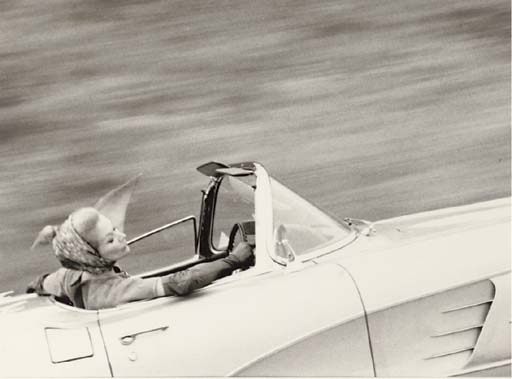
Lillian Bassman (B.1917)
Touch of Dew, Lisa Fonssagrives, Harper's Bazaar, New York, 1961
Gelatin silver print
10 1/8 x 13½in. (25.6 x 34cm.)
Gelatin silver print
10 1/8 x 13½in. (25.6 x 34cm.)
Private collection
Lisa Fonssagrives was born Lisa Birgitta Bernstone on 17 May 1911, in Sweden (variously reported as Gothenburg or Uddevalla) and raised in Uddevalla. As a child, she took up painting, sculpting and dancing. She went to Mary Wigman's school in Berlin and studied art and dance. After returning to Sweden, she opened a dance school. She moved from Sweden to Paris to train for ballet and worked as a private dance teacher with Fernand Fonssagrives, which then led to a modeling career. She would say that modeling was "still dancing".
While in Paris in 1936, photographer Willy Maywald discovered her in an elevator and asked her to model hats for him. The photographs were then sent to Vogue, and photographer Horst P. Horst took some test photographs of her. In July 1939, she appeared in the German illustrated weekly Der Stern and was photographed also by André Steiner. Before Fonssagrives came to the United States in 1939, she was already a top model. Her image appeared on the cover of many magazines during the 1930s, 1940s and 1950s.
Fonssagrives worked with various noted fashion photographers, including George Hoyningen-Huene, Man Ray, Erwin Blumenfeld, George Platt Lynes, Richard Avedon, and Edgar de Evia. She married Parisian photographer Fernand Fonssagrives in 1935; they divorced in 1949. She married American photographer Irving Penn in 1950 and became his muse.
After her modeling career ended she designed a leisurewear clothing line for Lord & Taylor. She went on to become a sculptor in the 1960s and was represented by the Marlborough Gallery in Manhattan. More on Lisa Fonssagrives
Bassman's photography is notable for her unusual printing techniques and innovative graphic effects, which involve experimentation with gauze and tissue in the darkroom. This experimentation, combined with the close rapport she establishes with her models, has resulted in pictures memorable for their emotional atmosphere, impressionistic mood, and subtlety of intimate gestures. More on Lillian Bassman
Herbert Ponting
'Terra Nova' at the ice-foot, Cape Evans, 1911
Carbon print
28 x 22½in. (71 x 57cm.)
Carbon print
28 x 22½in. (71 x 57cm.)
Private collection
The Terra Nova Expedition, officially the British Antarctic Expedition, was an expedition to Antarctica which took place between 1910 and 1913. Led by Captain Robert Falcon Scott, the expedition had various scientific and geographical objectives. Scott wished to continue the scientific work that he had begun when leading the Discovery Expedition from 1901 to 1904, and wanted to be the first to reach the geographic South Pole.
He and four companions attained the pole on 17 January 1912, where they found that a Norwegian team led by Roald Amundsen had preceded them by 34 days. Scott's party of five died on the return journey from the pole; some of their bodies, journals, and photographs were found by a search party eight months later. The expedition, named after its supply ship, was a private venture financed by public contributions and a government grant. More on The Terra Nova Expedition
As a member of the shore party in early 1911, Ponting helped set up the Terra Nova Expedition's Antarctic winter camp at Cape Evans, Ross Island. The camp included a tiny photographic darkroom. Although the expedition came more than 20 years after the invention of photographic film, Ponting preferred high-quality images taken on glass plates. With these plates, Ponting could capture images of Antarctic icescapes and landscapes.
Englishman Herbert Ponting (1870-1935) was an adventurer first and photographer second. As a young man, he rejected the idea of following his father into banking and instead set off for the American West and wilds of California. Finding work first as a miner, Ponting eventually bought a fruit ranch and married an American woman. Photography had always been a hobby and encouraged after a chance meeting with a photographer near San Francisco, Ponting began showing his work publicly and offering stereoscopic prints to publishing companies. After the turn of the century, Ponting gathered his equipment and traveled to Asia as a freelancer. He first photographed the Russo-Japanese War then continued on to Burma, Korea, Japan, China, and India providing travel stereoscopes to the burgeoning magazine market.
Ponting returned to Europe an experienced professional and traveled the continent photographing and writing extensively for many contemporary periodicals. In 1910, he published a book of Japanese scenes, In Lotus-land Japan, and was elected a Fellow of the Royal Photographic Society. Given Ponting’s extensive accomplishments and reputation as a raconteur, it was not a surprise when he was chosen as a member of Robert Falcon Scott’s Terra Nova Expedition to the South Pole, the first ever photographer invited on an Antarctic expedition. More on Herbert Ponting
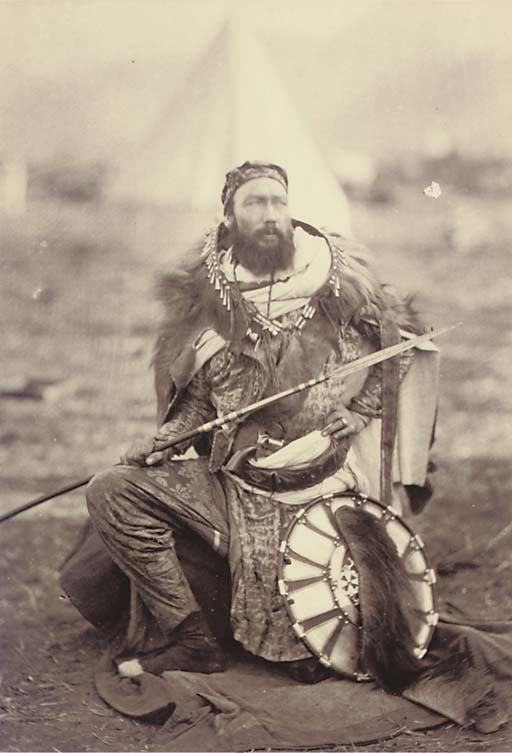
SERGEANT JOHN HARROLD (active 1860s) & STAFF
The Abyssinian War, 1868
Albumen print
The Abyssinian War, 1868
Albumen print
3½ x 2¼in. (8.6 x 5.7cm.) to 10 3/8 x 8 1/8in. (26.5 x 20.5cm.)
Private collection
The British Expedition to Abyssinia was a rescue mission and punitive expedition carried out in 1868 by the armed forces of the British Empire against the Ethiopian Empire (also known at the time as Abyssinia). Emperor Tewodros II of Ethiopia, then often referred to by the anglicized name Theodore, imprisoned several missionaries and two representatives of the British government in an attempt to force the British government to comply with his requests for military assistance. The punitive expedition launched by the British in response required the transportation of a sizeable military force hundreds of kilometers across mountainous terrain lacking any road system. The formidable obstacles to the action were overcome by the commander of the expedition, General Robert Napier, who was victorious in every battle against the troops of Tewodros, captured the Ethiopian capital, and rescued all the hostages. The expedition was widely hailed on its return for achieving all its objectives. More on The British Expedition to Abyssinia
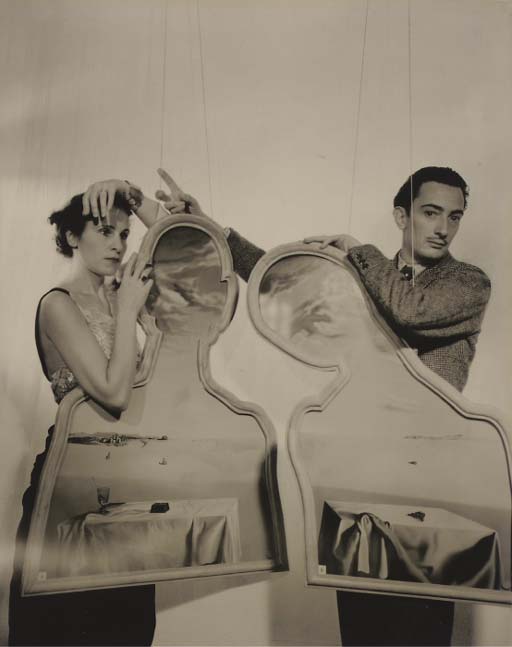
Cecil Beaton
Gala and Salvador Dali, c.1935
Gelatin silver print 9 5/8 x 7 5/8in. (24.4 x 19.4cm.)
Private collection
Salvador Dali was born in 1904 in Figueres, Spain. Dali was encouraged to explore his artistic talents from an early age. He received formal training at the Academia de San Fernando in Madrid where he quickly gained attention from his classmates for his Cubist work. Dali was expelled from the Academia for behavioral issues and moved to Paris, where he quickly befriended Picasso, Magritte, and Miro. His new acquaintances led Dali to his Surrealist phase.
Though inspired by classic artists like Raphael, Bronzino, Vermeer, and Velazquez (Dali’s trademark mustache was influenced by Velazquez), Dali is best known for his surrealist work. In 1931, Dali painted “The Persistence of Memory,” his most famous piece, which featured the motif of the melting clock, which can be found in many of his works. More on Salvador Dali
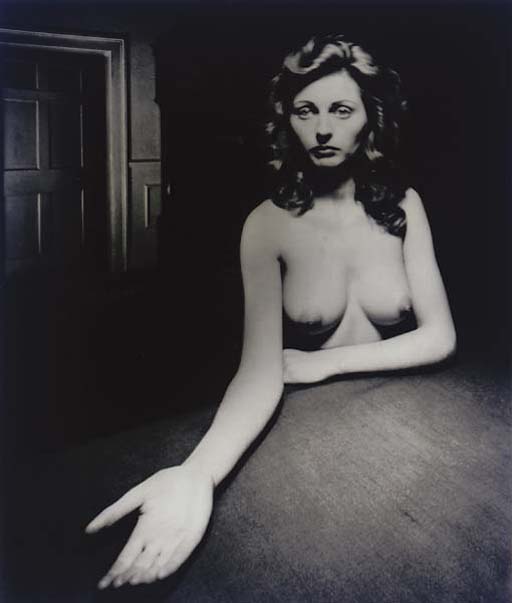
Bill Brandt (1906-1984)
Nude, 1948
gelatin silver print, printed 1970s
signed in ink on mount
13½ x 11½in. (34.3 x 29.1cm.)
Nude, 1948
gelatin silver print, printed 1970s
signed in ink on mount
13½ x 11½in. (34.3 x 29.1cm.)
Bill Brandt’s striking portrait, landscape, and nude photography embraced experimentation and helped expand the boundaries of the medium in the early 20th century. Brandt’s frames largely focused on British society. He first earned recognition for his documentary pictures, as exemplified in his book The English at Home (1936), which captured social and working conditions in the country. After World War II, Brandt transitioned to a more expressive style, cropping his compositions and shooting from unusual angles to transform bodies into abstract landscapes. Brandt’s work has been exhibited in New York, Paris, Stockholm, San Francisco, Houston, Boston, and Washington, D.C., and belongs in the collections of the Victoria and Albert Museum, the Museum of Modern Art, the George Eastman Museum, and the Bibliothèque Nationale de France. His work has sold for up to six figures on the secondary market. More on Bill Brandt
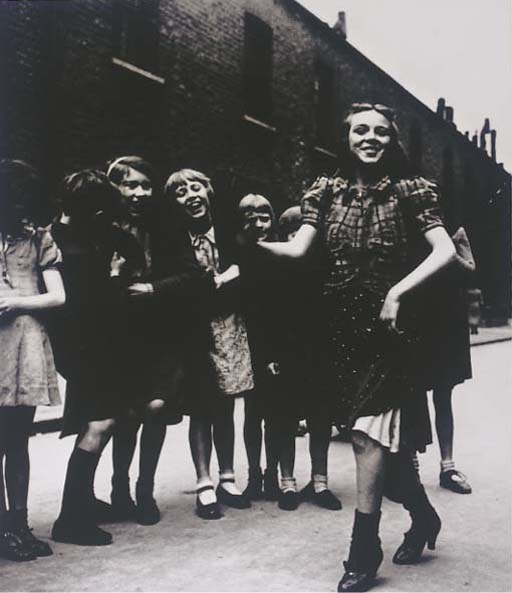
Bill Brandt
East End girl dancing the Lambeth Walk, c. 1939
Gelatin silver print, printed 1970s 13 3/8 x 11½in. (34 x 29.2cm.)
Private collection
The Lambeth Walk is a song from the 1937 musical Me and My Girl. The song takes its name from a local street, Lambeth Walk, once notable for its street market and working-class culture in Lambeth, an area of London. The tune gave its name to a Cockney dance made popular in 1937 by Lupino Lane.
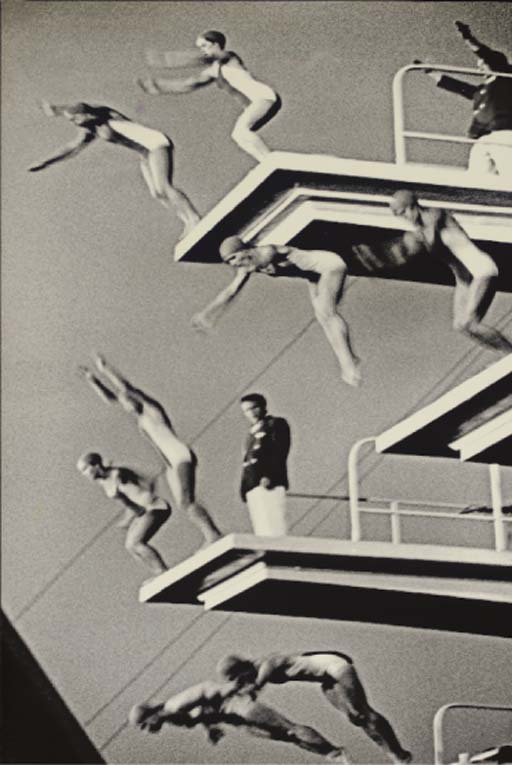
Lev Abramovich Borodulin
Water Festival, 1960 Gelatin silver print, printed before 1973
15 5/8 x 10¾in. (39.8 x 27.4cm.)
Private collection
Lev Abramovich Borodulin (25 January 1923, Moscow – 21 December 2018, Tel Aviv) was a Russian and Israeli photographer, master of sports photography.
Between 1940 and 1941 he studied at the art department of Moscow State University of Printing Arts, which ended only after the war. Participated in the Great Patriotic War, awarded medals For the Defence of Moscow and For the Capture of Berlin, he is injured.
Photography became engaged after graduation. The first publication took place in 1947 in the student newspaper. In 1950–1960 he worked as a photographer for the magazine Ogoniok. The first photographer in the Soviet Union, apply effects Fisheye lens.
Photography Year Book in 1964 recognizes Leo Borodulin star of world photography. In 1967, a Japanese newspaper Asahi Shimbun the best photographer of the year. In 1971 in Munich Lev Borodulin has been awarded for achievements in the field of sports photography Olympic gold medal. More on Lev Abramovich Borodulin
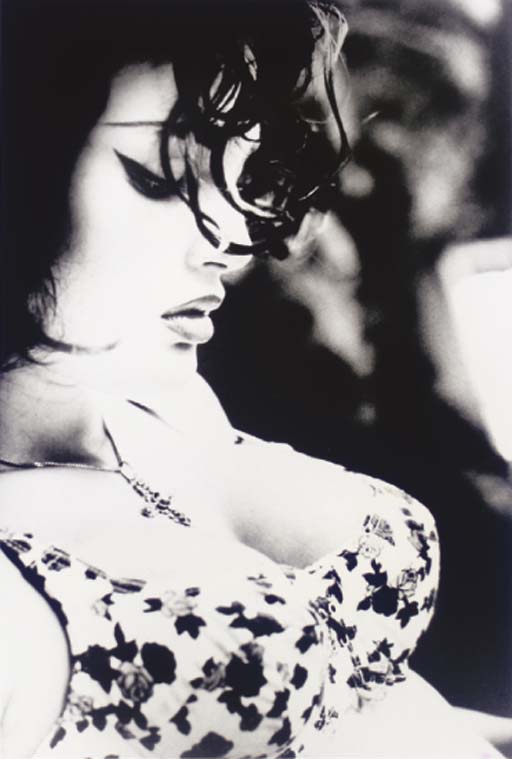
Ellen von Unwerth
Oh La La!, Miami, 1996 Gelatin silver print
17¾ x 12in. (45.2 x 30.5cm.)
Private collection
Ellen von Unwerth (born 17 January 1954) is a German photographer and director, specializing in erotic femininity.
She worked as a fashion model for ten years before becoming a photographer, and now makes fashion, editorial, and advertising photographs.
In a 2018 interview with Harper's Bazaar, she explained her feminist approach to photography: "The women in my pictures are always strong, even if they are also sexy. My women always look self-assured. I try to make them look as beautiful as they can because every woman wants to feel beautiful, sexy and powerful. That's what I try to do." More on Ellen von Unwerth
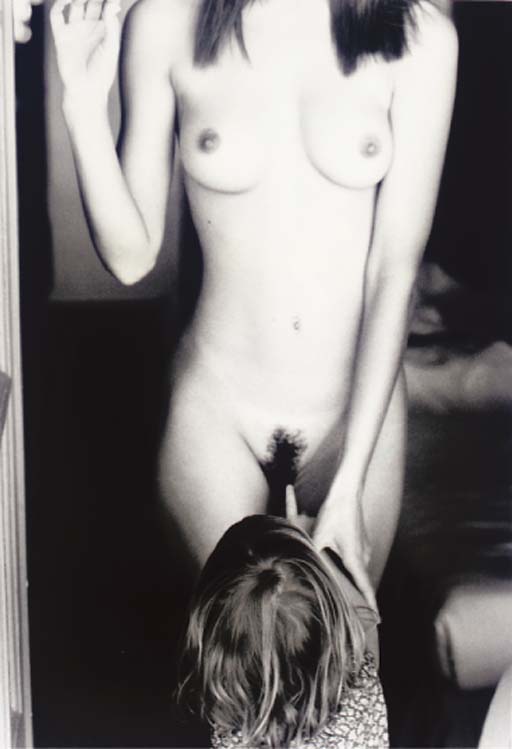
Ellen von Unwerth
Rebecca Asking 'What is it Mama?', New York, 1996 Gelatin silver print
17 7/8 x 12 1/8in. (45.2 x 30.7cm.)
Private collection
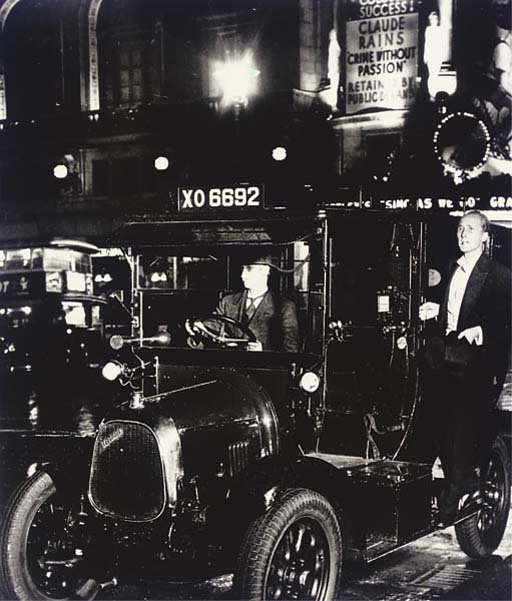
Bill Brandt
Hansom cab, c.1934 gelatin silver print, printed 1970s
signed in ink on mount
13½ x 11½in. (34.3 x 29.2cm.)
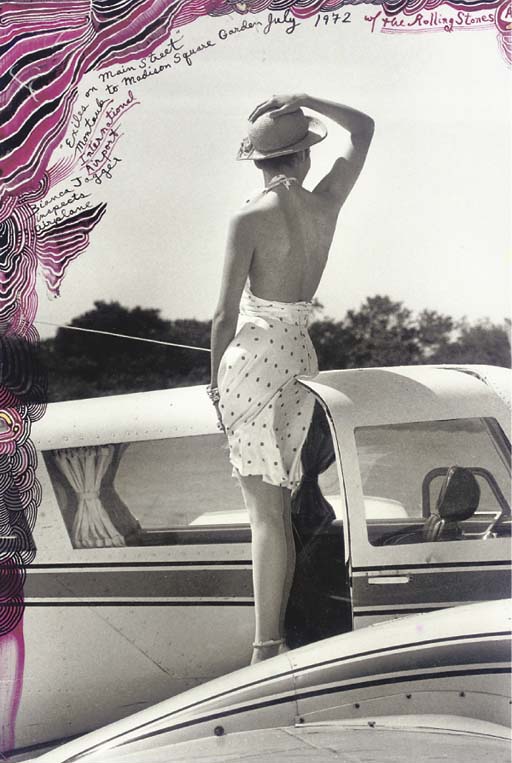
PETER BEARD
Bianca Jagger inspects Airplane, July, 1972
gelatin silver print triptych with paint/ink handwork, printed c.1990
13¼ x 9 1/8in. (33.7 x 22.7cm.)
Bianca Jagger inspects Airplane, July, 1972
gelatin silver print triptych with paint/ink handwork, printed c.1990
13¼ x 9 1/8in. (33.7 x 22.7cm.)
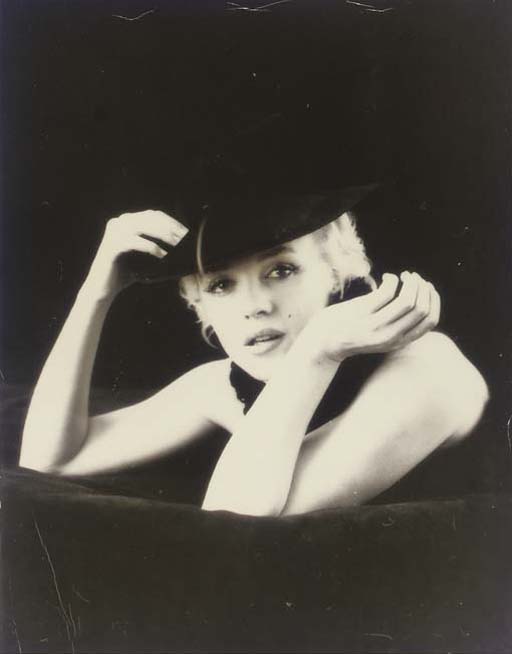
MILTON H. GREENE (1922-1985)
Marilyn Monroe, Black Sitting, 14 February 1956
gelatin silver print
signed, dated and numbered '3159/3D' in pencil, credit stamp on verso
13¼ x 10 3/8in. (33.5 x 26.3cm.)
Marilyn Monroe, Black Sitting, 14 February 1956
gelatin silver print
signed, dated and numbered '3159/3D' in pencil, credit stamp on verso
13¼ x 10 3/8in. (33.5 x 26.3cm.)
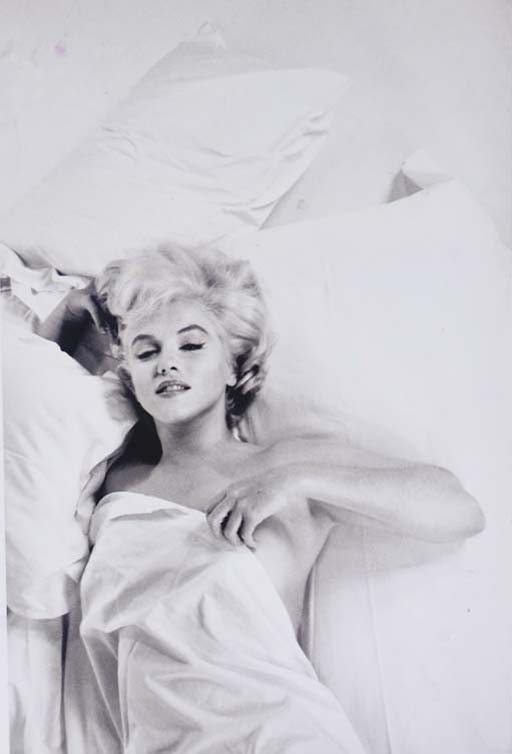
EVE ARNOLD
Marilyn Monroe, Studio Session, Hollywood, California, 1960
gelatin silver print, printed later
copyright credit blindstamp in margin; signed, titled and dated in pencil on verso
14 x 9½in. (35.5 x 24cm.)
Marilyn Monroe, Studio Session, Hollywood, California, 1960
gelatin silver print, printed later
copyright credit blindstamp in margin; signed, titled and dated in pencil on verso
14 x 9½in. (35.5 x 24cm.)
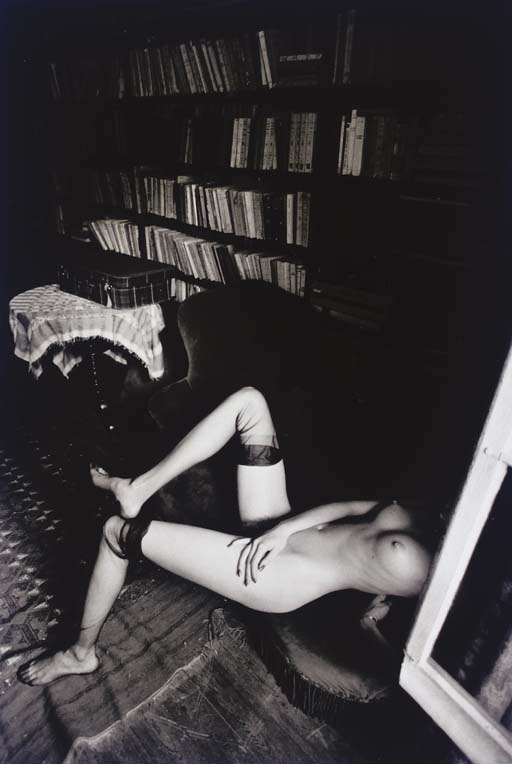
JEANLOUP SIEFF (1933-2000)
Nu Coupé, 1976
gelatin silver print
signed and dated in ink in margin; titled and dated in ink, credit stamp on verso
11¾ x 8in. (30 x 20.2cm.)
Nu Coupé, 1976
gelatin silver print
signed and dated in ink in margin; titled and dated in ink, credit stamp on verso
11¾ x 8in. (30 x 20.2cm.)
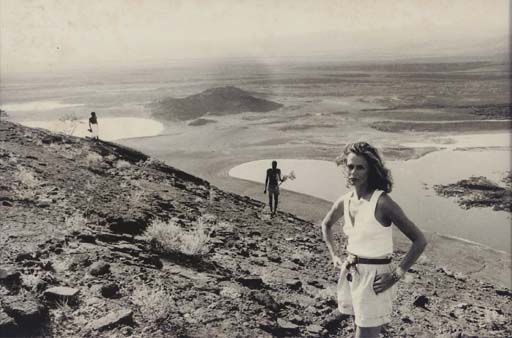
PETER BEARD
Lauren Hutton at Lake Turkana, 1970s
2 gelatin silver prints
one titled and annotated 'P.B. Archives' in ink on verso
each approx. 4 3/8 x 6½in. (11 x 16.5cm.)
Lauren Hutton at Lake Turkana, 1970s
2 gelatin silver prints
one titled and annotated 'P.B. Archives' in ink on verso
each approx. 4 3/8 x 6½in. (11 x 16.5cm.)
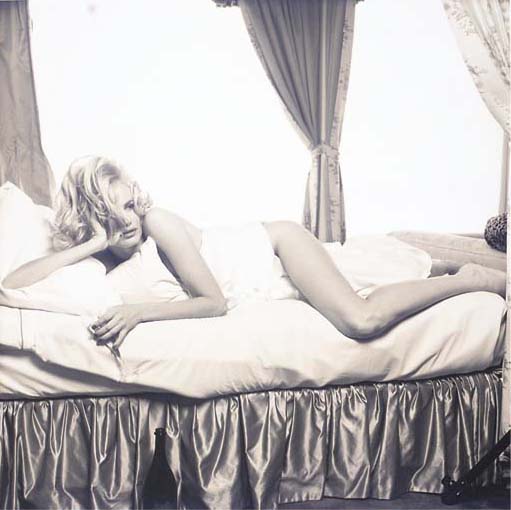
MICHEL COMTE (B.1954)
Darryl Hannah, c.1990
gelatin silver print
signed and annotated 'AP' in pencil, copyright credit blindstamp in margin; signed and indistinctly annotated in pencil on verso
15½ x 15½in. (39.2 x 39.2cm.)
Darryl Hannah, c.1990
gelatin silver print
signed and annotated 'AP' in pencil, copyright credit blindstamp in margin; signed and indistinctly annotated in pencil on verso
15½ x 15½in. (39.2 x 39.2cm.)
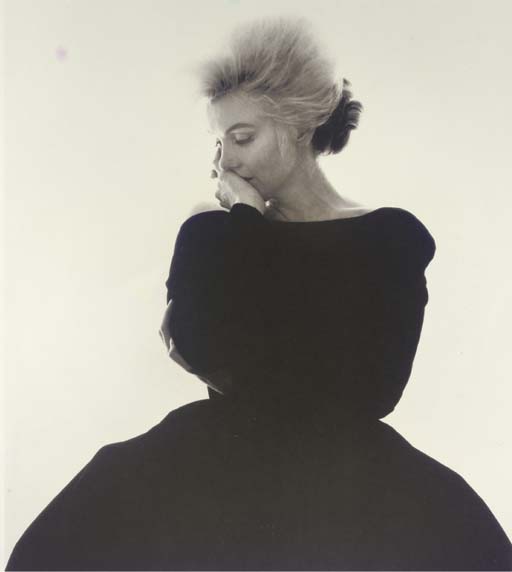
BERT STERN (B.1930)
Marilyn in Vogue, 1962
digital inkjet print, printed later
signed, titled and dated in pencil in margin; signed and numbered '389' in pencil, copyright credit reproduction limitation stamp on verso
22 5/8 x 19¾in. (57.5 x 50.5cm.)
Marilyn in Vogue, 1962
digital inkjet print, printed later
signed, titled and dated in pencil in margin; signed and numbered '389' in pencil, copyright credit reproduction limitation stamp on verso
22 5/8 x 19¾in. (57.5 x 50.5cm.)
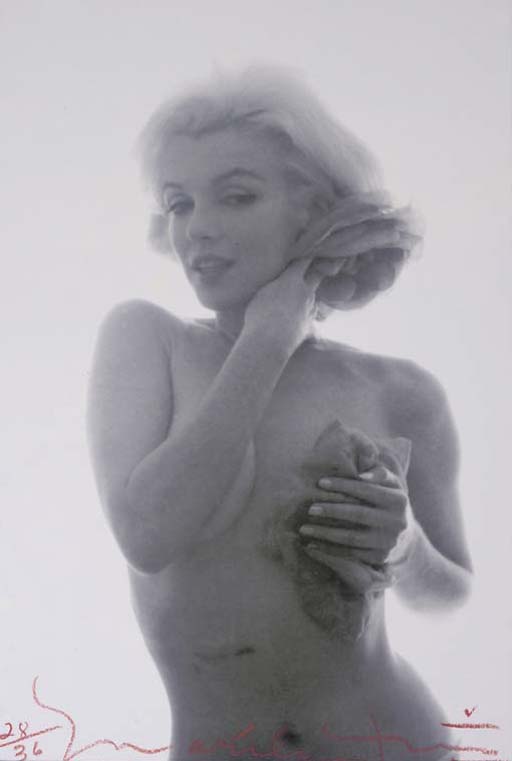
BERT STERN
Marilyn in Roses, 1962
digital ink-jet print, printed 2006
signed, titled and numbered '28/36' in crayon on recto; titled, dated and numbered '28/36' in pencil, credit reproduction limitation stamp on verso14 x 9½in. (36.5 x 24cm.)
Marilyn in Roses, 1962
digital ink-jet print, printed 2006
signed, titled and numbered '28/36' in crayon on recto; titled, dated and numbered '28/36' in pencil, credit reproduction limitation stamp on verso14 x 9½in. (36.5 x 24cm.)
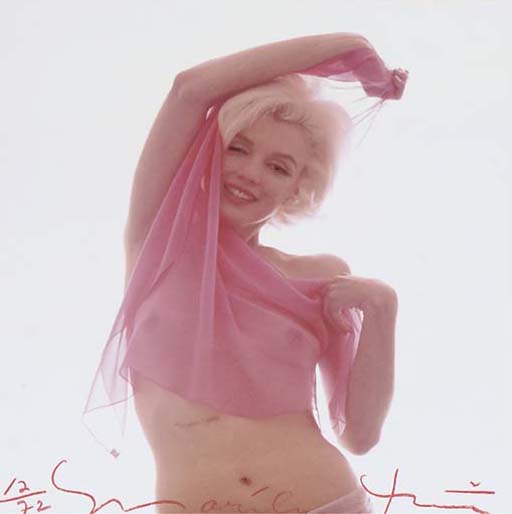
BERT STERN
Marilyn, Nude Red Scarf, 1962
digital ink-jet print, printed 2006
signed, titled and numbered '12/72' in crayon on recto; dated in pencil, credit reproduction limitation stamp on verso
10 x 10in. (25.5 x 25.5cm.)
Marilyn, Nude Red Scarf, 1962
digital ink-jet print, printed 2006
signed, titled and numbered '12/72' in crayon on recto; dated in pencil, credit reproduction limitation stamp on verso
10 x 10in. (25.5 x 25.5cm.)




No comments:
Post a Comment